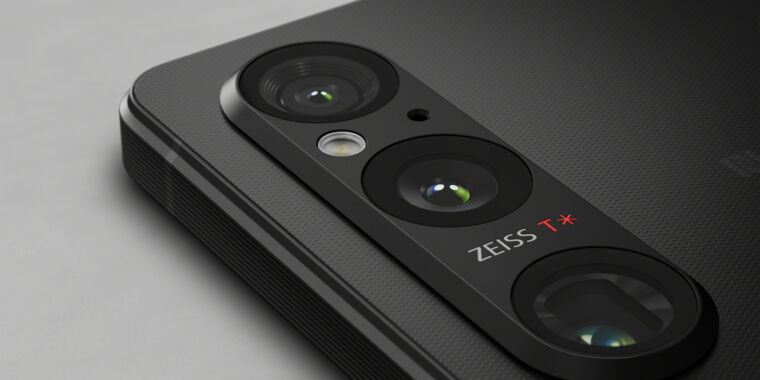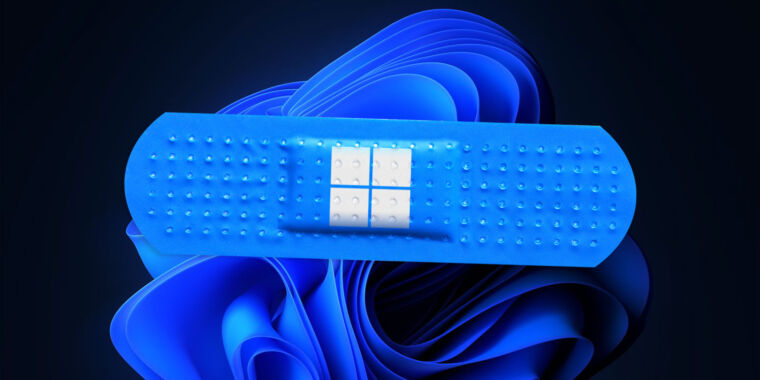-
The Sony Xperia 1 V.
Sony -
The back. That’s a fingerprint reader/power button on the side, and a camera shutter button.
Sony -
Behold Sony’s material master class. The back is glass with a diamond texture, while the side banding has raised ridges around it.
Sony -
That’s a lovely diamond knurling on the shutter button, and another look at the side ribbing.
Sony -
The cameras. Sony’s marketing department could have talked up Sony’s camera component business here but chose not to.
Sony -
The top and bottom. That’s a headphone jack (whoa) on top, and a USB-C port and MicroSD flap on the bottom.
Sony -
Headphones are typically wireless, but Sony actually makes ones with some kind of wire that physically plugs into this phone. Interesting.
Sony -
The sides.
Sony -
If you want an actual use for the 4K display, maybe you could justify it as a Sony camera viewfinder?
Sony -
I can’t link to the band list directly, so here’s a photo.
Sony is still pumping out smartphones, and the latest flagship is the Sony Xperia 1 V. Believe it or not, this has a US price, and you can order it online!
You can never call Sony generic. This is the only company in the world that ships a “4K” (3840×1644) smartphone, giving the 6.5-inch, 120 Hz OLED a ridiculous 643 PPI. We’ve seen some of these in person—Sony’s densest smartphone displays hit 801 PPI once upon a time—and these ultra-dense displays always seemed far past what anyone can see at a reasonable distance. The other uniquely Sony design traits are symmetrical top and bottom bezels and a camera shutter button. There’s also a side power button fingerprint reader. I’m starting to think Sony’s fancy 4K displays don’t support any of the normal under-screen components like a hole punch camera or in-screen fingerprint reader, and that’s how this entire design happened.
There are a bunch of lovely textures happening all over this phone. The back is still glass, but it has a small diamond dimple effect sort of like a diamond plate, and that’s in the glass, not under it. Apparently, you can feel it, as Sony calls it a “functional tactile design.” The band that wraps around the phone’s perimeter is ribbed, and there is diamond knurling on the camera shutter button. There’s also a slick-looking matte finish to the glass.
For specs, it has a Snapdragon 8 Gen 2 System on a chip, 12GB of RAM, 256GB of storage, and a 5000 mAh battery with 30 W wired charging and “wireless charging support” with no voltage listed. Usually, that means 5 W. There’s a headphone jack and a microSD slot. Sony is the primary supplier of the world’s smartphone cameras, and some manufacturers even list Sony model numbers for each camera sensor. Sony—presumably using a bunch of Sony sensors—isn’t dishing out model numbers, though. You get a 52 MP main sensor, a 12 MP wide-angle, and a 12 MP telephoto. The main sensor is 1/1.35-inch, which is not as big as the ultra-beefy 1-inch Sony sensors that some other phones have.
The biggest thing about a Sony phone is always the price, and the Xperia 1 V is a whopping $1,399. Samsung’s phone in this size class is the 6.6-inch Galaxy S23+, for $999, while the more spec-comparable (minus the 4k screen) Ultra model is still $200 less, at $1,199. A 256GB iPhone Pro Max is $1,099. It’s expensive.
You’ll never see this in a store in the US, but Sony will just ship you one from its website. There’s a photo of the cellular band support in the gallery, but by my count, it has all the right bands for T-Mobile and AT&T. Preorders are live now, and the earliest estimated delivery is July 28.








